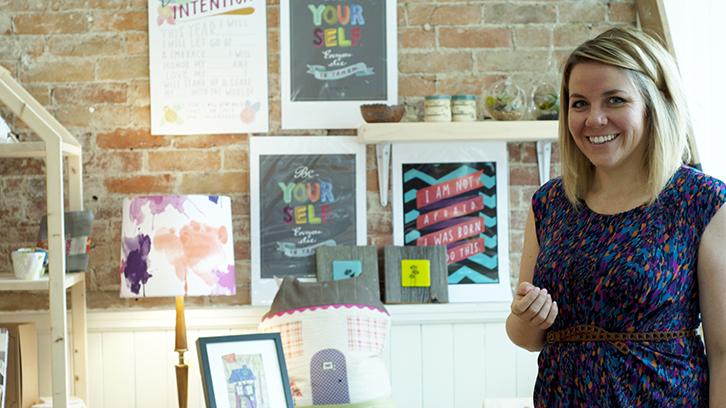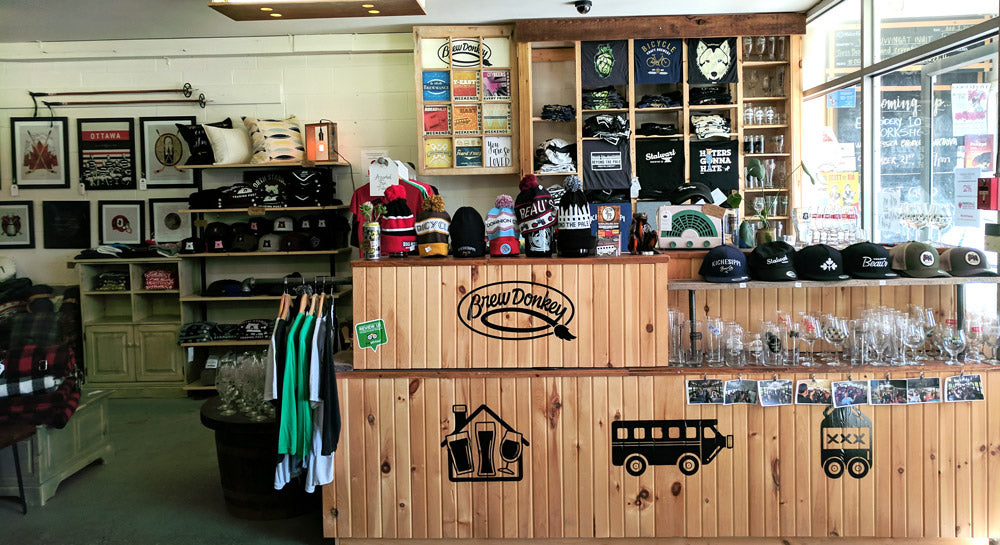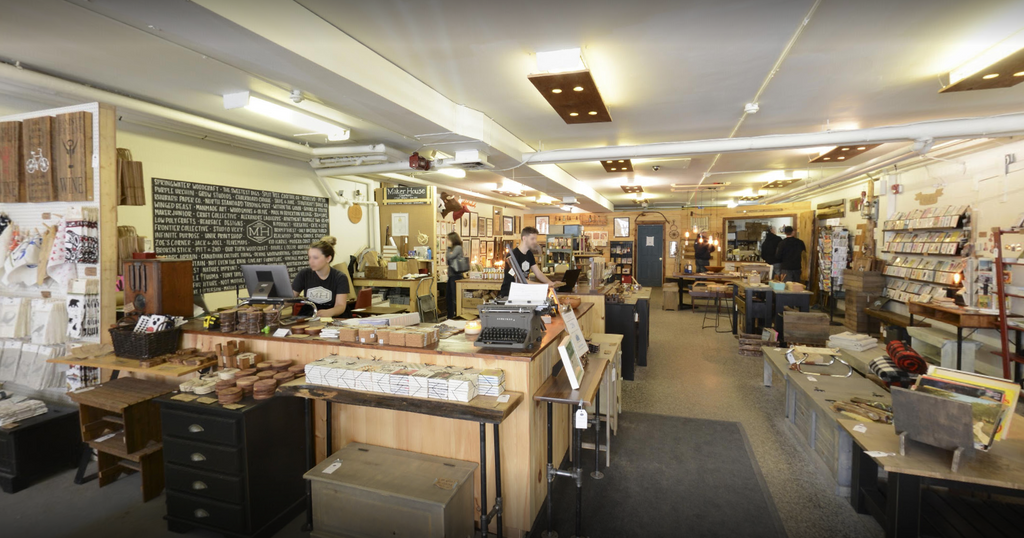While there is nothing wrong with having ambitious goals for your small business, as a small business owner, you’re not yet a corporation or a big-box retailer, and that’s a great thing!
When it comes to battling it out with your biggest competition, sure, they might have the margins to slash prices, a squad of marketers at their disposal, and a “real”small business accountingdepartment instead of a shoebox full of receipts (hey, it happens).
But you’ve got a leg up on those faceless corporations, because you’re a real person with a pretty great face, and peoplewantto work with you.
From customers who prefer to spend their hard-earned cash supporting small businesses to other business owners, this is an advantage you should leverage any time you can.
One of the best ways to do that is to workwithyour fellow small businesses.

Free Reading List: Ecommerce Motivation
Having trouble focusing on growing your small business? Get access to our free, curated list of high-impact productivity articles.
Get our Ecommerce Motivation reading list delivered right to your inbox.
Almost there: please enter your email below to gain instant access.
We'll also send you updates on new educational guides and success stories from the Shopify newsletter. We hate SPAM and promise to keep your email address safe.
Business collaborations aren’t just for musicians, after all, and they can be a serious boost to your bottom line when they’re done right. (Plus, they’re super successful for musicians, so why not run with it?)
Does working with other businesses and growing your business at the same time sounds like a good deal? Then let’s chat about collaborations by diving into the stories of some real-life entrepreneurs who ran four very different, and very successful, collaborations.
1. Work together on “traditional” promotion
When the retailers on Mill Street in Almonte, Ontario—a small town just outside of Ottawa—wanted to get more foot traffic, they knew that, individually, traditional promotion like a magazine ad was way out of reach, so they turned to other local businesses to supercharge their efforts.

Their businesses, which includeCheerfully Made Goods,Kentfield Kids, and a range ofother utterly charming small businesses, didn’t have the budget to make a hefty investment in traditional advertising.
But a small business collaboration, designed to get more people to their shopping district as a whole? Well, that was another matter entirely.
Ten of Almonte’s merchants contribute monthly for a collective page in a regional food magazine. “Instead of it costing us a thousand bucks, we each pay $80 a month,” says Emily Arbour, owner of Cheerfully Made Goods. “We don’t necessarily get our own ad, but it’s for Almonte. If the town’s busy, then we all benefit, including me."

Plus, there’s no need to limit your promotional collabs to just the stuff you couldn’t pay for on your own.
“We often promote each other,” Emily shares. “If I’m having a workshop but I also know that Tin Barn is having a sale, it will always be at the bottom of my email. We do that type of thing for one another.”
Read more about how Almonte turned themselves into a (collaborative!) shopping destination:Community is at the Heart of One Small Town’s Commercial Success
So the next time you’re looking at apromotional opportunitythat seems just out of reach (or even wildly out of reach) try to think about who else in your small business community might also benefit from going after it as a team. If it benefits you both, why not go for it? There are many local business owners who would love to work with like-minded owners who share the same values and ideals!
2. Work together on “traditional” distribution
Physical retail space is Having a Moment, with savvy entrepreneurs doing everything from holding events in their space to investing in timelypop-up retail locations.
But the cost of physical space, especially in a prime location, isn’t an expense some small businesses can absorb all on their own.
That’s where collaboration can be a lifesaver, but it’s notjustabout cutting costs. Done right, collaborating on retail space can actually help you grow your business.
Just ask Gareth Davies, proprietor of Ottawa’sMaker House.
His store, which stocks local, hand-crafted home goods on a trendy neighborhood’s main street, started as a pop-up. When it came time to commit to a full-time, multi-year lease, he knew he wanted a bit of backup.
“We started as a pop-up shop in this space, since it was bigger than we ever could have committed out of the gate as a new retail store. We did get a pop-up rate, which was cheaper as a proof of concept, but then it came time to pony up and pay a full market rate for a three to five year lease. I looked at partnerships I built in the pop-up phase to see who might be interested in sharing the space.”
We did get a pop up rate, which was cheaper as a proof of concept, but then it came time to pony up and pay a full market rate for a three to five year lease.
幸运的是,合作伙伴也在看着他—specifically, Brad Campeau, the founder of Brew Donkey.Brew Donkeyruns local craft beer tours that highlight Ottawa’s thriving craft beer scene, and when Brad saw the Maker House space, he knew it might be a match made in home-goods-and-hops heaven.
“He was trying to grow to more of a main street presence, instead of having tours meet in a nondescript building that was way off main street—still urban, but hard to find,” Gareth shared of his talks with Brad. “So he approached me to make sure he was on my radar, because he knew that the pop-up thing would end eventually.”
Since they were already acquainted (as Gareth puts it, Ottawa is essentially a “small big town”) the partnership was a no-brainer.
“We pretty much knew right away it was going to be a good fit, and then we ended up building this perfect little space at the front of the store that looks like a bar, that you would walk up to and order swag. It’s like a bar meets a merch table.”

Gareth credits the significant overlap in audiences for the partnership’s continued success. It turns out, people who want to support local in their beverage selection are also interested in supporting local in their shopping, and vice versa.
It turns out, people who want to support local in their beverage selection are also interested in supporting local in their shopping, and vice versa.
给了他们机会to get their businesses in front of new and highly targeted audiences—and there’s one significant way they partner to bring more people into the space on a regular basis.
“Beer is part of the retail formula that is probably under tapped,” Gareth says, making sure to note the well-placed pun. “But it’s true. Every month in here we host parties and social nights where yeah, you’re in here, you’re in the space, you might be shopping and looking at things, but you’re also here to meet up with friends and taste craft beer samples from a local brewery.”
3. Launch an epic, niche gift guide
With prime gift-giving season on the horizon, it’s no surprise that gift guides are on your radar—but when one group of small business owners started thinking guides, they didn’t jump straight to pitching their products to other people’s guides.
They made their own instead.
“The vintage market is definitely a niche market,” shares JayDee Mahs, owner ofThird Shift Vintage.

When she’s not scouring vintage stores for new finds, she collaborates with a team of six other vintage store business owners across the US, and coordinates their group efforts via a Slack channel. When it came time for promotional ideas, they all noted one thing was missing.
“There aren’t a lot of websites that promote vintage as gifts. Our team brainstormed ways we could promote the items in our shops in a fun and interesting way—and the idea of gift guides was started.”
Gift guides aren’t just for the busy holiday shopping season. Their team of vintage businesses has put together gift guides for everything from vintage gifts for new graduates to vintage gifts for travelers, and more, all with a curated selection of gifts from their stores.

So how do they do it in practice?
“All seven of us contributed to the gift guide—from the design phase through to the production phase. We discussed the tools we would need to create the guide, the format we wanted to use, how the guide would be marketed (especially beyond the blog), and how we would track the success of the guide. Each of us contributed items to be featured, as well as the text that would be used to describe those items.”
For the final touches, one of their team members serves as an editor, and draws on graphic design skills to bring the images and layout together.
The results of these targeted guides have been positive—so much so that they’re looking at working on several more together.
“Now that we know the mechanics of putting together a gift guide and ways to successfully promote it, we are really looking forward to finishing the guides we are currently working on. These upcoming guides are going to be exciting and fun, and hopefully just as successful (or more) than last year,” shares JayDee.
If you think gift guides might be the perfect fit for your business (especially with a major gifting occasion coming up) start with this guide onhow to get your products placed in other guides—and even if you’re not working with other businesses in your niche, now might be the perfect time to start!
4. Create collaborative product lines
No one knows better than Rachelle Tessier that chalkboards aren’t just for classrooms anymore.
Her business,Project Pine Designs,让美丽的手工制作的黑板,和whole range of chalkboard-accented products: glassware, wall planters, and even gift tags. She does it all—except for chalkboard-lettering, which wasn’t an issue until she decided to add a new service to her business.

“I had been playing around with the idea of offering chalkboard rentals as another branch of the business, but I wanted there to be a value-add of being a “one-stop-shop,” shares Rachelle. “It can be easy to find a chalkboard on Kijiji or at a craft store, but I wanted to be able to offer the ‘whole package’ with a locally-made, hand-lettered chalkboard option for brides and businesses in Ottawa.”
I wanted to be able to offer the ‘whole package’ with a locally-made, hand-lettered chalkboard option for brides and businesses in Ottawa.
As an involved member of her community, Rachelle knew that there were talented local hand-letterers who had thriving businesses doing exactly that: helping brides and businesses with custom lettering. So instead of trying to do everything, she decided to support a fellow entrepreneur by bringing them into the rental side of things.
Luckily, she’d been followingChalked by Mabz, a local hand-lettering services business run by Marie-Andree Brisson—who, unsurprisingly, goes by Mabz. Her services were the perfect fit to complement Rachelle’s new rental business.
“Mabz’ flexibility and ability to whip up projects within the short rental time frame was exactly what I needed,” says Rachelle. “This has been our first year of collaboration, and I’d say we hit the ground running pretty quickly. Nearly every chalkboard rental I had this year has included the lettering element, and we’re both excited to see what next year’s wedding season has coming our way.”
And beyond just the success of the rental collaborations, Rachelle is quick to point out that there are far more benefits than simply a successful new product line.
Financially, you are potentially doubling your base of clients, but also, by building each other up, it helps elevate the industry as a whole.
“Financially, you are potentially doubling your base of clients, but also, by building each other up, it helps elevate the industry as a whole. Genuinely liking someone’s work and choosing to collaborate with them is a positive reflection of both your businesses and brings in amazing referrals.”
你不是一个真正的有发光的背书could get about the power of collaborations for small businesses.
So on that note, how have you collaborated with other small business owners—or how are you planning to in the future?
Ready to create your online store? Start your free trial of Shopify—no credit card required.
Small business collaboration FAQ
How do you collaborate with other small businesses?
At the end of the day, small business collaboration is all about creating win-win relationships with other businesses who serve similar audiences. You don’t have to have some massive partnership: reach out to other small business owners and try a small-scale business collaboration.
What’s the most popular small-business collaboration strategy?
One of the easiest ways to collaborate with other businesses is through cross-promotion.
What are some of the benefits of small business collaboration?
- There are many benefits of small business collaboration including:
- Creating win-win partnerships with like-minded business owners.
- Getting exposure to a similar target market.
- Building trust and relationships in your industry.
- Quickly increase revenue through strategic joint partnerships.



